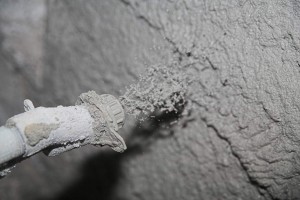Improvement Effects of Hydroxypropyl Methylcellulose on Cement-Based Materials
Hydroxypropyl methyl cellulose ( HPMC for short) has excellent thickening property and can be used as a good dispersion resistance agent for concrete. In recent years, with the development of exterior insulation technology, the improvement of cellulose production technology, and its own excellent properties, hydroxypropyl methyl cellulose has been widely used in the construction industry.
Dispersion resistance is an important technical indicator to measure the quality of dispersion-resistant agents. As a water-soluble polymer compound, also known as water-soluble resin or water-soluble polymer, hydroxypropyl methyl cellulose is s a hydrophilic polymer material by increasing the viscosity of mixing water to increase the consistency of its mixture, and can be dissolved in water to form a solution or dispersion. With the increase of hydroxypropyl methyl cellulose dosage, the dispersion resistance of freshly mixed cement mortar will get better and better.
Characteristics of Concrete Strength
(1). The addition of hydroxypropyl methyl cellulose has an obvious retarding effect on the mortar mixture. With the increase of hydroxypropyl methyl cellulose dosage, the setting time of mortar will be successively extended. Under the condition of the same hydroxypropyl methyl cellulose dosage, the setting time of mortar molded under water is longer than that molded in the air. This characteristic is beneficial for underwater concrete pumping.
(2). The freshly mixed concrete mortar with the addition of hydroxypropyl methyl cellulose has very good cohesive properties and almost no bleeding phenomenon.
(3). The dosage of hydroxypropyl methyl cellulose and the water demand of mortar show a decrease at the beginning and then a significant increase.
(4). The addition of water reducing agents helps to improve the problem of increasing water demand for mortar, but remember to have a reasonable control of its addition amount; otherwise it may sometimes make the dispersion resistance under water of freshly mixed cement mortar decrease.
(5). The cement mortar test pieces with the addition of hydroxypropyl methyl cellulose and the blank test pieces have little difference in the structure; moreover, the cement mortar test pieces pouring in the water and in the air have little difference in the structure and density. The main reason is although the addition of hydroxypropyl methyl cellulose greatly reduces the loss and the degree of dispersion of cement pouring in the water, it also makes the density of the cement decrease at the same time. In the construction, under the condition of ensuring non-dispersible effects under water, the dosage of hydroxypropyl methyl cellulose should be minimized as possible.

